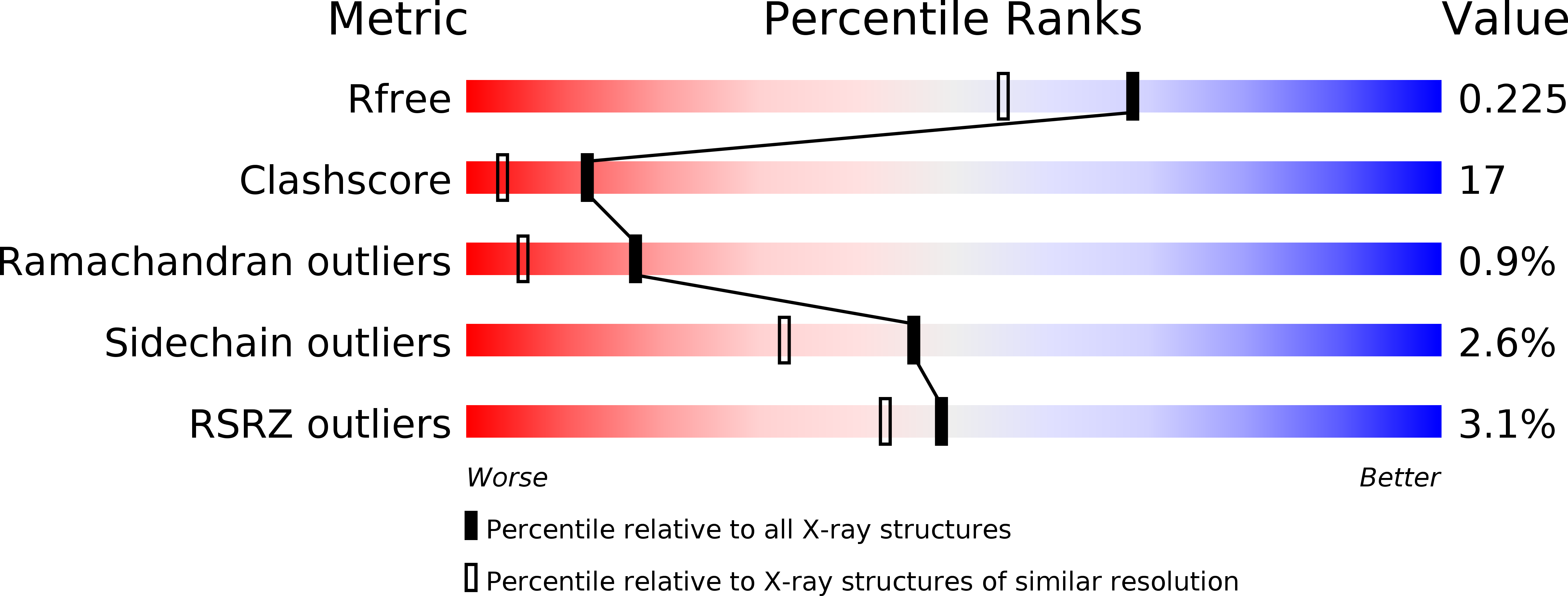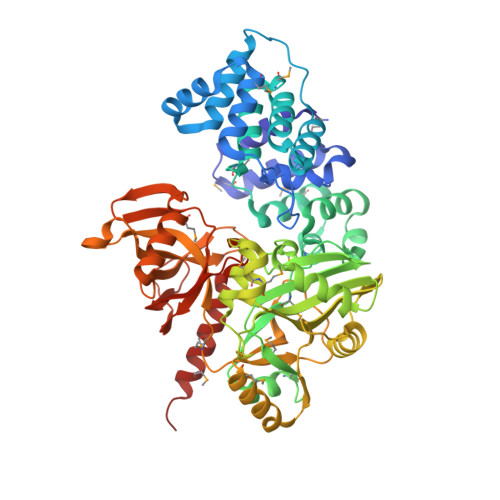The Closed Structure of an Archaeal DNA Ligase from Pyrococcus Furiosus.
Nishida, H., Kiyonari, S., Ishino, Y., Morikawa, K.(2006) J Mol Biol 360: 956
- PubMed: 16820169
- DOI: https://doi.org/10.1016/j.jmb.2006.05.062
- Primary Citation of Related Structures:
2CFM - PubMed Abstract:
DNA ligases join single-strand breaks in double-stranded DNA, and are essential to maintain genome integrity in DNA metabolism. Here, we report the 1.8 A resolution structure of Pyrococcus furiosus DNA ligase (PfuLig), which represents the first full-length atomic view of an ATP-dependent eukaryotic-type DNA ligase. The enzyme comprises the N-terminal DNA-binding domain, the middle adenylation domain, and the C-terminal OB-fold domain. The architecture of each domain resembles those of human DNA ligase I, but the domain arrangements differ strikingly between the two enzymes. The closed conformation of the two "catalytic core" domains at the carboxyl terminus in PfuLig creates a small compartment, which holds a non-covalently bound AMP molecule. This domain rearrangement results from the "domain-connecting" role of the helical extension conserved at the C termini in archaeal and eukaryotic DNA ligases. The DNA substrate in the human open-ligase is replaced by motif VI in the Pfu closed-ligase. Both the shapes and electrostatic distributions are similar between motif VI and the DNA substrate, suggesting that motif VI in the closed state mimics the incoming substrate DNA. Two basic residues (R531 and K534) in motif VI reside within the active site pocket and interact with the phosphate group of the bound AMP. The crystallographic and functional analyses of mutant enzymes revealed that these two residues within the RxDK sequence play essential and complementary roles in ATP processing. This sequence is also conserved exclusively among the covalent nucleotidyltransferases, even including mRNA-capping enzymes with similar helical extensions at the C termini.
Organizational Affiliation:
Department of Structural Biology, Biomolecular Engineering Research Institute (BERI), Osaka 565-0874, Japan.

















